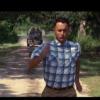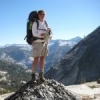Thyould I or thyouldn't I?
OK, I dood it.
I understand the OP's perspective, but have a different take. If you're going to shoot one, you need to have a plan for what you're going to do afterward. You should also have a reason for shooting one in the first place.
Pre-planning involves actively hunting one. What's your reason and what are you going to do when you succeed? The plan should include how you will control the situation between pulling the trigger and pulling away from the scene.
Contingency planning involves intentional shooting given the opportunity. Again, what's your reason? You're in a riskier situation between the shot and packing out.
Then there's the Smeja approach. Don't plan and consistently make as many bad decisions in sequence as possible.
It may not require a body to prove they exist, but a body is most likely to achieve this objective. A body is required if you just want a trophy, or choose still photography as your method of proof. A body, by definition, may also include a sedated subject, but then you have to be an even better planner.
Personally I think that bigfoot as a species kill more people than people kill bigfoot. And I believe that discovery, and a body, serve the larger public good. This position stems from my belief that the government knows of them, and even with a prominent environmental agenda, chooses not to disclose them. This implies a heavy downside to disclosure from the government's perspective, which leads me back to the beginning of this paragraph.
The probable government downside to disclosure is the public recognition of a threat the government can't control. A threat from a bonafide Boogey man. The ultimate lurker. So if you can't control the Boogey Man, control any chance of viable proof leading to "discovery", which includes any body the government comes across.
Which takes us to the furball control division of the "Men in Black". Assuming that the government will attempt to confiscate a body, this has to be part of your plan if you shoot one. Rapid media exposure and public disclosure seem to me the best countermeasures to this, and necessary to planning.
Most importantly, you should have an attorney on hand from the moment you pull the trigger.



